SENP2
-
Official Full Name
SUMO1/sentrin/SMT3 specific peptidase 2 -
Overview
SUMO1 (UBL1; MIM 601912) is a small ubiquitin-like protein that can be covalently conjugated to other proteins. SENP2 is one of a group of enzymes that process newly synthesized SUMO1 into the conjugatable form and catalyze the deconjugation of SUMO1-containing species. -
Synonyms
SENP2;SUMO1/sentrin/SMT3 specific peptidase 2;SUMO1/sentrin/SMT3 specific protease 2;sentrin-specific protease 2;AXAM2;DKFZp762A2316;KIAA1331;SMT3IP2;SMT3-specific isopeptidase 2;sentrin/SUMO-specific protease SENP2
Recombinant Proteins
- Human
- Mouse
- Rat
- E.coli
- Mammalian Cells
- HEK293
- E. coli
- His
- GST
- Non
- Avi
- Fc
- SUMO
Background
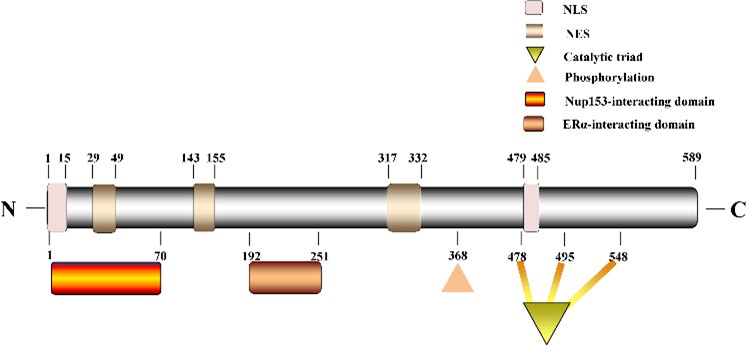
Fig1. The functional domain of SENP2 protein. (Shan-Ling Liu, 2018)
What is SENP2 protein?
SENP2 gene (SUMO specific peptidase 2) is a protein coding gene which situated on the long arm of chromosome 3 at locus 3q27. SENP2 is a small ubiquitin-like modifier (SUMO) specific protease. It plays a variety of biological functions in cells, mainly through catalytic deSUMOylation of target proteins, affecting protein stability, subcellular localization, transcriptional activity and so on. SENP2 is a member of the SENP family of proteases that regulate the homeostasis of SUMO modifications and are essential for maintaining a stable intracellular environment and responding to external signals. The SENP2 protein is consisted of 589 amino acids and its molecular mass is approximately 67.9 kDa.
What is the function of SENP2 protein?
Regulating metabolic processes, such as controlling systemic metabolism in the liver, influences the development of obesity and non-alcoholic fatty liver disease through liver-adipose tissue interorganical dialogue. It affects cell signaling, cell cycle regulation and cell fate determination. Involvement in the regulation of insulin secretion and insulin signaling may be related to the treatment of obesity and type 2 diabetes (T2D). By regulating the SUMO state of 5'-AMP-activated protein kinase alpha (AMPKα), the liver gluconeogenesis process is controlled, thereby affecting blood glucose levels.
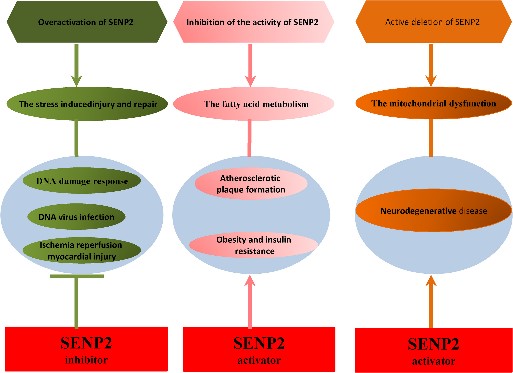
Fig2. The summaries of SENP2 in the biological functions. (Shan-Ling Liu, 2018)
SENP2 Related Signaling Pathway
SENP2 interacts with AMPKα and promotes its desumO, thereby affecting the protein stability of AMPKα and participating in the regulation of liver gluconeogenesis. SENP2 plays a key role in regulating insulin secretion and affects blood sugar levels. SENP2 plays a role in regulating the production of Th17 cells and affects the immune response. SENP2 is associated with cellular metabolic processes and may be relevant for the treatment of obesity and type 2 diabetes. SENP2 regulates the SUMO modification level of CREB, reduces the expression of Necdin, and promotes the differentiation of brown fat cells.
SENP2 Related Diseases
Abnormal expression or activity of SENP2 protein may be associated with certain types of cancer, such as breast and lung cancer, and SENP2 protein is expressed in human glioblastoma tissues and cells and may play a role in the development of glioblastoma. SENP2 is indispensable for the development of brown adipose tissue, and its loss leads to impaired differentiation of brown adipose cells. SENP2 regulates neuronal calcium homeostasis in adult mice through the SENp2-PLCβ4 signaling axis, which in turn regulates neurogenesis in the hippocampal dentate gyrus granule region, so the abnormality of SENP2 may be related to the development of neurodegenerative diseases, such as Alzheimer's disease.
Bioapplications of SENP2
Recombinant SENP2 protein has wide application potential in medical research, drug development, disease diagnosis and treatment. Due to SENP2's role in metabolic diseases such as obesity and non-alcoholic fatty liver disease, targeting SENP2 regulation may provide new strategies for the treatment of these diseases. SENP2 is a deSUMO modifying enzyme, and the design and optimization of its inhibitors may contribute to the development of disease-specific therapeutics such as SENP2 antibody. The change of SENP2 expression level may be used as a biomarker for disease diagnosis and treatment monitoring.
Case Study
Case Study 1: Ying Liu, 2023
Succinate dehydrogenase (SDH) is a heterotetrameric enzyme complex belonging to the mitochondrial respiratory chain and uniquely links the tricarboxylic acid (TCA) cycle with oxidative phosphorylation. Cancer-related SDH mutations promote succinate accumulation, which is regarded as an oncometabolite. Post-translational modifications of SDH complex components are known to regulate SDH activity, although the contribution of SUMOylation remains unclear. Here, SENP2 mutant constructs were generated and transferred into HEK293T cells. Then researchers performed mass spectrometry and pull-down assay to detect the protein interaction. Researchers show that SDHA is SUMOylated by PIAS3 and deSUMOylated by SENP2, events dictating the assembly and activity of the SDH complex. Moreover, CBP acetylation of SENP2 negatively regulates its deSUMOylation activity.
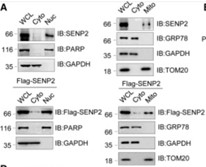
Fig1. SENP2 levels examined by immunoblotting in cytoplasmic, nuclear, and mitochondrial fractions.

Fig2. The relative amounts of SDHA in mitochondrial and cytoplasmic fractions were unaltered by ectopic expression of FLAG-SENP2.
Case Study 2: Liwen Zhou, 2020
Human single-stranded DNA-binding protein 1 (hSSB1) is required for the efficient recruitment of the MRN complex to DNA double-strand breaks and is essential for the maintenance of genome integrity. However, the mechanism by which hSSB1 recruits NBS1 remains elusive. Here, we determined that hSSB1 undergoes SUMOylation at both K79 and K94 under normal conditions and that this modification is dramatically enhanced in response to DNA damage. SUMOylation of hSSB1, which is specifically fine-tuned by PIAS2α, and SENP2, not only stabilizes the protein but also enhances the recruitment of NBS1 to DNA damage sites. Cells with defective hSSB1 SUMOylation are sensitive to ionizing radiation, and global inhibition of SUMOylation by either knocking out UBC9 or adding SUMOylation inhibitors significantly enhances the sensitivity of cancer cells to etoposide.
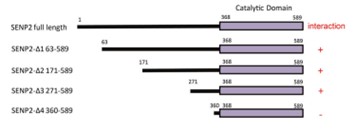
Fig3. Schematic description of the SENP2 truncations.
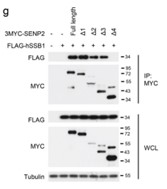
Fig4. Proteins analyzed by western blotting or IP with the indicated 3MYC-SENP2 truncations.
Quality Guarantee
High Purity
.jpg)
Fig1. SDS-PAGE (SENP2-6153H)
Involved Pathway
SENP2 involved in several pathways and played different roles in them. We selected most pathways SENP2 participated on our site, such as RNA transport,Wnt signaling pathway, which may be useful for your reference. Also, other proteins which involved in the same pathway with SENP2 were listed below. Creative BioMart supplied nearly all the proteins listed, you can search them on our site.
| Pathway Name | Pathway Related Protein |
|---|---|
| RNA transport | NUP155,EIF4G2B,POP7,XPO5,PABPC1,NUP210L,NUP93,EIF3HA,GEMIN7,EEF1A1B |
| Wnt signaling pathway | WNT11,WNT1,WNT4,FZD1,FZD2,FZD8,FZD3A,SIAH1,TBL1Y,FOSL1 |
Protein Function
SENP2 has several biochemical functions, for example, serine-type carboxypeptidase activity. Some of the functions are cooperated with other proteins, some of the functions could acted by SENP2 itself. We selected most functions SENP2 had, and list some proteins which have the same functions with SENP2. You can find most of the proteins on our site.
| Function | Related Protein |
|---|---|
| serine-type carboxypeptidase activity | CPN1,CPM,CPE,CPZ,CPDB,DPP7,CTSA,SCPEP1,CPVL,CPD |
Interacting Protein
SENP2 has direct interactions with proteins and molecules. Those interactions were detected by several methods such as yeast two hybrid, co-IP, pull-down and so on. We selected proteins and molecules interacted with SENP2 here. Most of them are supplied by our site. Hope this information will be useful for your research of SENP2.
SUMO3;IKBKG;SUMO2;ARL6IP1;AGTRAP;FUNDC1;SYNE4
Resources
Research Area
Deubiquitinating Enzymes (DUBs)Ubiquitin-like Modifiers (UBLs) and Regulators
Post-translational Modification of NFkB/IkB
Related Services
Related Products
References
- Yuan, YF; Zhai, R; et al. SUMO-1 Plays Crucial Roles for Spindle Organization, Chromosome Congression, and Chromosome Segregation During Mouse Oocyte Meiotic Maturation. MOLECULAR REPRODUCTION AND DEVELOPMENT 81:712-724(2014).


